Woolly Bear Caterpillar
October is not only a month of sparrows and the autumn leaf show. It is also a big month for a particular creature that I’ve seen many times lately, crawling across paths on my hikes.
Yes indeed! It’s the Woolly Bear Caterpillar, one of the more common caterpillars out there- the one that I see more than any other species. It’s rich cinnamon and black colors are diagnostic. In the South, it’s called the Woolly Worm.
Woolly Bears are an average of 2 inches long and have 13 segments, which you can count by the rows of bristles on its body. Autumn is the best time to see them, though they can be spotted briefly in the spring as well.
These fellas can move pretty quickly across a path. What they are doing in the autumn is looking for a place to hole up- like under a rock or tree bark- and hibernate through the winter. Amazingly, these creatures literally freeze solid in the winter, and then revive in the spring, where they eat and then begin the process of sealing themselves into a cocoon. Technically, they have a cryoprotectant substance in their tissues that allows them to survive frigid weather. This explains why they can be found in cold areas, including the Arctic.
The woolly bears eat low-growing herbaceous plants, clovers and wild forbs. Young maple and birch trees are also favored by the woolly bear. They do not typically eat crops or ornamentals. The favored habitat of the woolly bear is meadows, pastures and road sides. They can also be found along woodland edges.
Unlike some caterpillars, you can pick this one up- they have no irritating substance that can cause itching or swelling. Though if you have sensitive skin, their bristles may cause mild dermatitis.
You’ll notice a variety of black and orange patterns on individuals of this species. This variation has been tied to an old folk belief .
This individual paused to munch on a leaf while I was observing it a couple of weeks ago
About the winter weather thing- according to folklore (as recounted by the Old Farmer’s Almanac), Woolly Bears can forecast what kind of winter lies ahead. Supposedly, the bigger the auburn section is, the milder next winter will be. In 1948, Dr. C. H. Curran- curator of insects at the American Museum of Natural History in New York City- started an 8-year study of recording Woolly Bear data in a park in New York state. This study, done in a spirit of fun, magnified the Woolly Bear legend. And the park where Dr. Curran did his study continues in compiling data to this very day. If you’d like to read more about this study, go here.
The legend that Woolly Bears can predict winter weather persists. Personally, I have a lot of fun just watching them crawl around this time of year. If you look closely, you may notice them crawling across backroads near fields and meadows- I’ll admit to trying to dodge them in my car when there’s no traffic around me.
In the spring, after they weave a cocoon, they hatch into an Isabella Tiger Moth. Unfortunately I don’t have a decent photo of one of these moths, but WIkipedia does:

Now that is a neat-looking moth. That’s befitting one of the most interesting caterpillars out there!

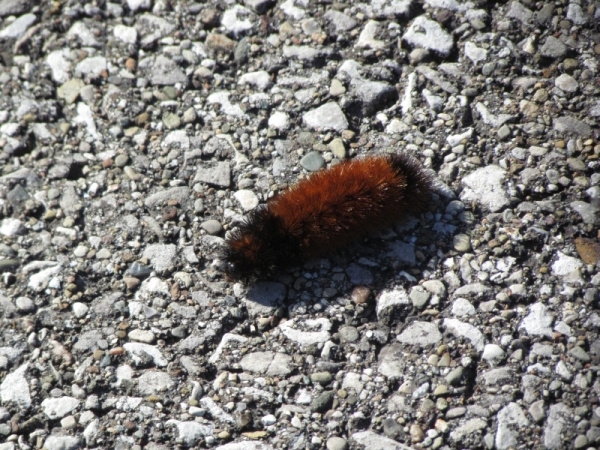


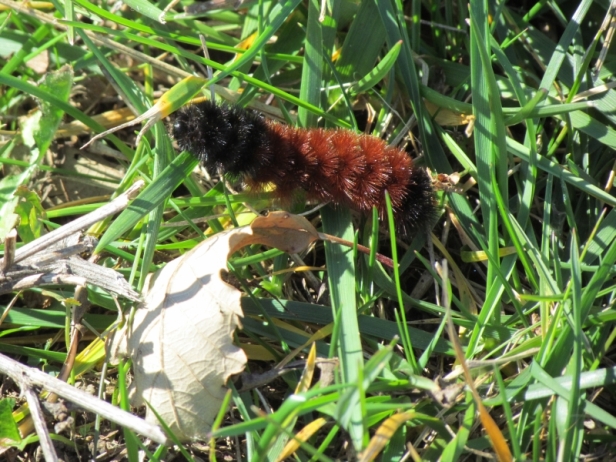
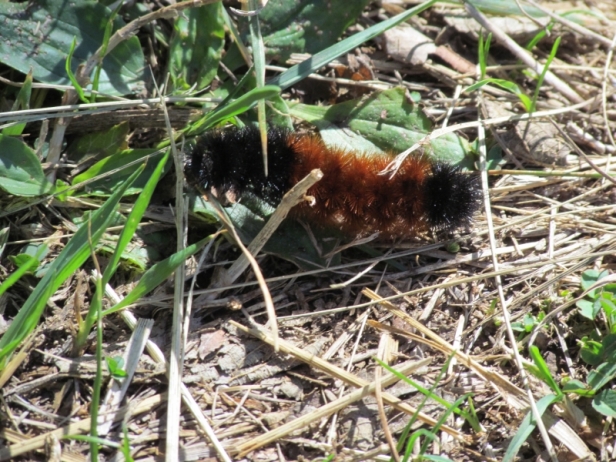
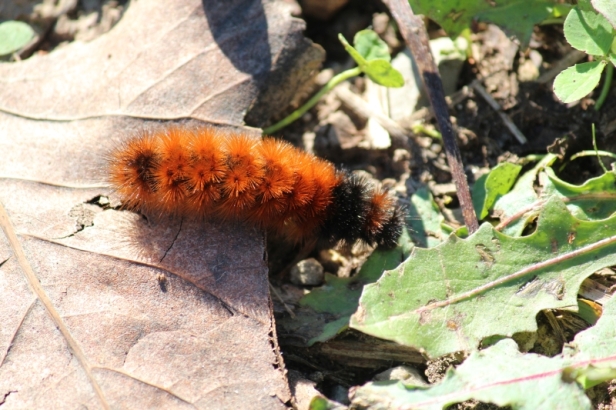
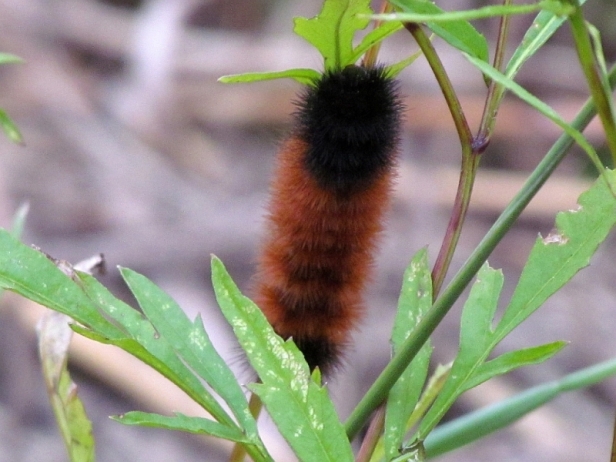
What great pics! I captured one of these too, will have to post soon. Thanks for all the info about them. I think mine was mostly brown, which does not fare well for a good winter. The Tiger Moth is very lovely too!
Many thanks, Barb! I saw the most Woolly Bears I’ve ever seen in a single day yesterday- I’ve read reports that this is a plentiful year for them.
For all the times I’ve read about these, this is the first time that I’ve learned what moth they become, thank you!
It IS sort of funny- the caterpillar being much more famous than what it turns into!
Nice shots and I learned something! Thanks 😀!
Thanks, Joleen!
Cute little caterpillars! I love their name, and the moth that they hatch into! It will be interesting to know if there’s any truth behind the folklore!
Me too, Jo- the name ‘Woolly Bear’ is simply fun to say! 🙂
Hi. I always wondered what kind of moth they became! Thanks! Jane
Sure, Jane! The moth is cool-looking, but the caterpillar stands out much more among its compatriots 🙂
What a marvelous post, Tracy! We have these lovely creatures all over the edges of the woods and sometimes crawling across the driveway. I was always told they were a predictor of the coming winter and I really enjoyed the Old Farmer’s Almanac article on Dr. Curran’s study. Now that I know what the moth form looks like, I will search it out in next summer. I garden for butterflies and moths and love finding new ones. Thanks for sharing such fun information 🙂
You’re welcome, Lynn! I’ll keep an eye out for the moths too- hope you see them in your garden!
What a great post! I’ve seen a bunch of wooly bears. So, according to me, this winter’s forecast is: early cold (already happened!), more snow than usual (lots of acorns, lots of wooly wooly bears).
We’ll see if I’m right. Don’t know if you pay attention to when the first locusts sing (I do), but this year, they sang earlier than I’ve ever heard them. They usually start a few days before/after July 4th; this year they were 10 days before July 4th.
Very cool, Mary! You’re on the ball keeping track of things! I hadn’t heard the acorn sign before, but I too have seen lots and lots of Woolly Bears. We’ll see how the winter goes- I like putting these things to the test 🙂
What a pretty moth. I had no idea that’s what Wooly Bears become.
It is a pretty moth, Patti!
i’ve seen several of these this year and they all have told of a mild winter here. (We’ll see) I’ve never seen the moth-it’s a nice one.
I’m sort of interested to see what kind of winter it’ll be too, Gardener!
Very interesting and informative post about the wooly bear. The moth is really pretty.
Thanks Pat- I want to see one of those moths next spring!
That really is a beautiful moth: it fits! Haven’t seen that many wooly bears this year. Hope that isn’t indicative of something!
Plenty of Woollies to spare out here in Ohio, Montucky 🙂
Isn’t nature fascinating?! Margie
Totally! 🙂